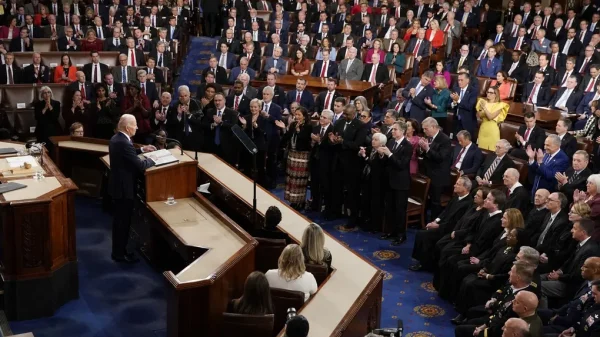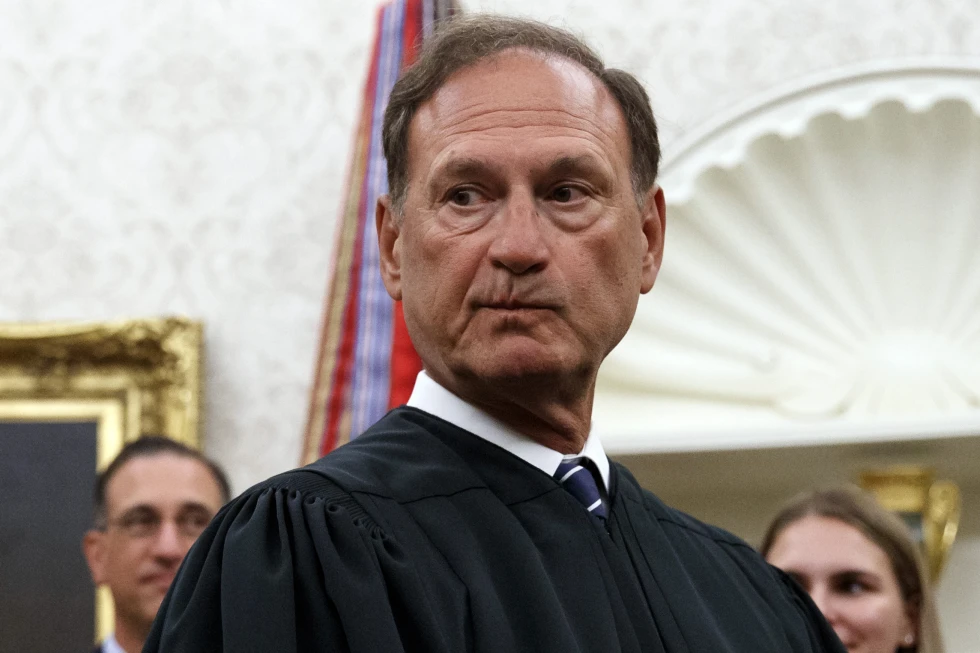Nine days after The New York Times reported on the political meaning of an upside-down American flag at U.S. Supreme Court Justice Samuel Alito’s residence, The Washington Post admitted it had the same story over three years ago but chose not to publish it.
The Post’s decision reflects a rare moment of self-reflection in journalism and highlights shifts in Supreme Court coverage since the incident, which occurred shortly after the January 6, 2021, Capitol insurrection.
On that day, some protesters supporting former President Donald Trump displayed an upside-down flag.

Donald Trump looks at the camera while talking about America’s healthcare plans (Via Shane Johnson/Shutterstock)
Both newspapers noted the same symbol outside Alito’s home in Fairfax County, Virginia, before President Joe Biden’s inauguration.
Alito explained that his wife, Martha-Ann Alito, hung the flag amidst a dispute with neighbors who had posted “personally insulting” signs directed at them. Judges typically avoid partisan symbols to maintain impartiality in potential political cases they might hear.
For journalists, this raises the question: Should public officials’ families be held to the same standards as the officials themselves?


























